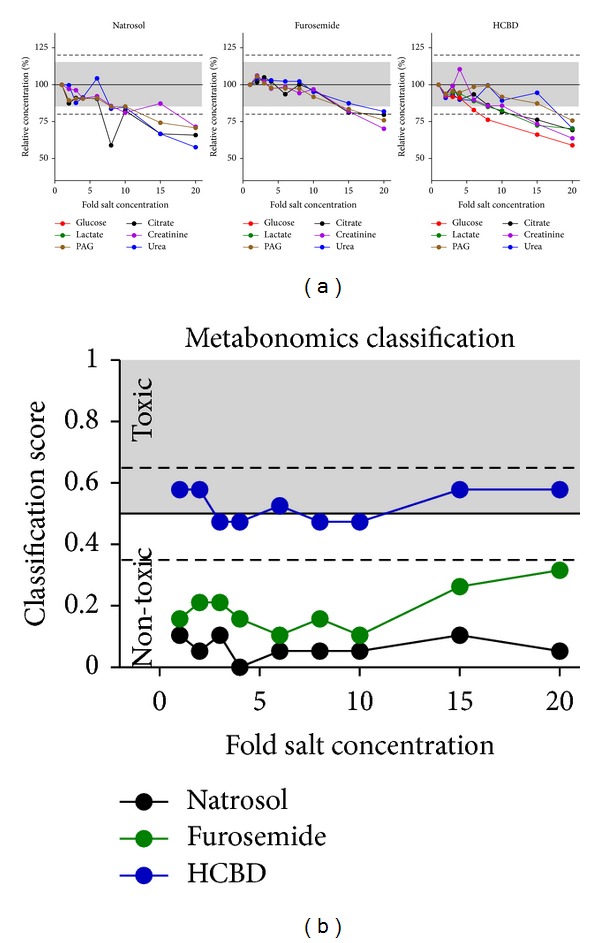Figure 4.

Effects of salt concentration increase. Glucose, citrate, lactate, creatinine, PAG, and urea were measured in urine samples from natrosol-, furosemide-, or HCBD-treated rats by 1H NMR metabolite quantification. Values given on the abscissa are relative salt concentrations adjusted by adding 35% NaCl solution to the original sample (see Supplement Table 2) (n = 1 per dot from pooled rat urine, for sample definition see Section 2.4). (a) Single metabolite quantification results are given as relative concentrations normalized to the original, not modified sample of each treatment. Values close to or below LLOQ (i.e., glucose and lactate concentrations in the samples from natrosol-and furosemide-treated rats) were excluded from evaluation. The grey range (15%) and dotted horizontal lines (20%) show the range of variation stated as acceptable by the “Guidance for Industry” [12]. (b) Prediction of nephrotoxicity was performed using a metabonomics approach (ensemble classification system). For each sample a classifier value is given, labelling the given compound as “(non-)toxic”. The horizontal line at 0.5 is the limit for the prediction of nephrotoxicity, the dashed lines at 0.35 and 0.65 represent an “intermediate” range, related to the statistical significance of the prediction.
